Iran. Part I. Main DetailsMap
January Hypocrisy—this is the word that best describes contemporary life in Iran. Iran was formerly called Persia. An Islamic revolution took place here exactly 30 years ago. Iran ceased being a secular state and became a religious one. The flight attendants on Aeroflot’s flights to Iran are all male and no alcohol is served on board. Female passengers must put on headscarves before they exit the plane. If a secular revolution were to take place here tomorrow, all Iranian women would immediately take off their headscarves and put on heels and miniskirts, and all the men would start drinking wine and spending half their day on Facebook. This is technically what everyone already does anyway, just not in public. In public, Iranians observe the hypocritical Islamic dress code and norms of public morality. In the privacy of their homes, they live their real lives: fun, dancing, free-flowing wine, and banned websites through VPN. In other words, the same things that people in Iran have been doing for centuries. 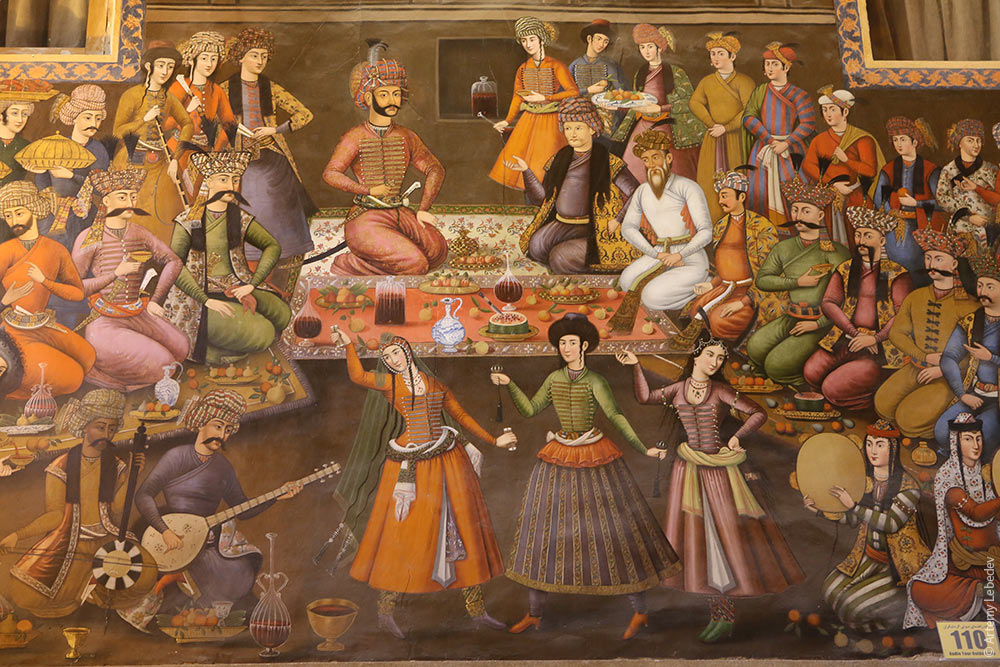 Every Iranian knows the word “VPN.” This is a way to access websites that are officially forbidden in the country. Yet everyone visits those websites on a daily basis. Alcohol is forbidden in Iran, yet everyone drinks. Many people grow their own grapes and make wine. Because of sanctions imposed by the US and EU, it’s impossible to use credit cards here, yet every carpet dealer accepts cards (they have terminals that process the payment through a company in the Emirates). I was told not to photograph the rally in honor of the 30th anniversary of the revolution, because the police might give me a hard time for not having a press visa. The police don’t let tourists photograph official events so that the latter can’t spread photos which show that few people were in attendance. The rally was well-attended, everyone marched joyfully down the street with posters that read “Resistance is Eternal” and “Down with the USA.” So I offer my readers other photographs instead. Everyone expresses discontent with the current Islamic stagnation—in hushed tones, but without any real fear. There are few religious Muslims in the country, everyone is simply pretending. “How lucky we are that we had the revolution 30 years ago,” proclaims the poster. 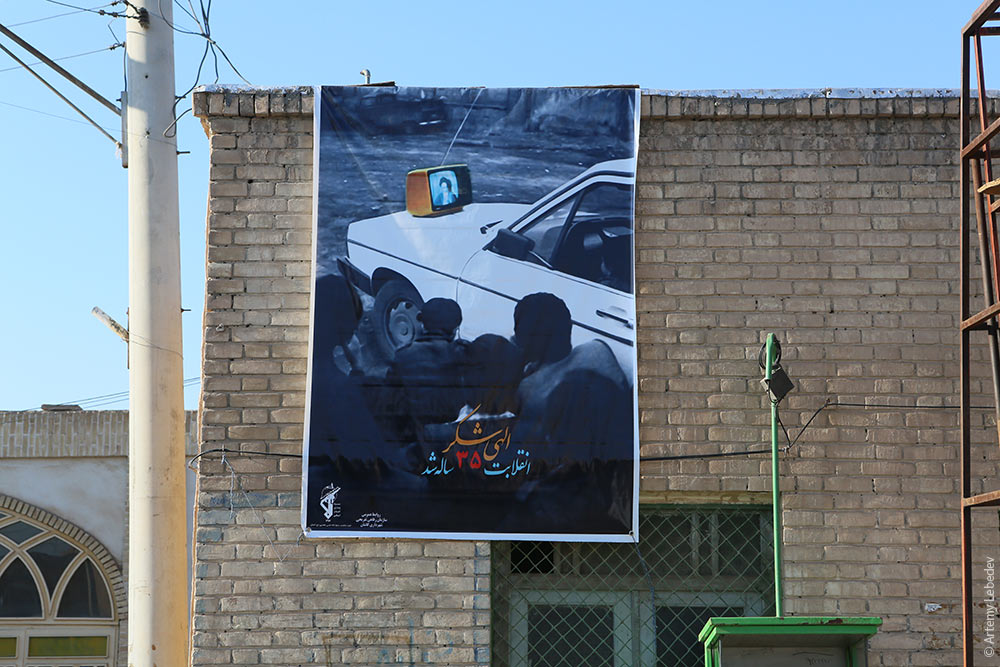 Iran most reminds me of the USSR during the Brezhnev stagnation era. Only instead of portraits of Lenin and Marx on every corner, there are portraits of Imam Khomeini and Supreme Leader Ali Khamenei. 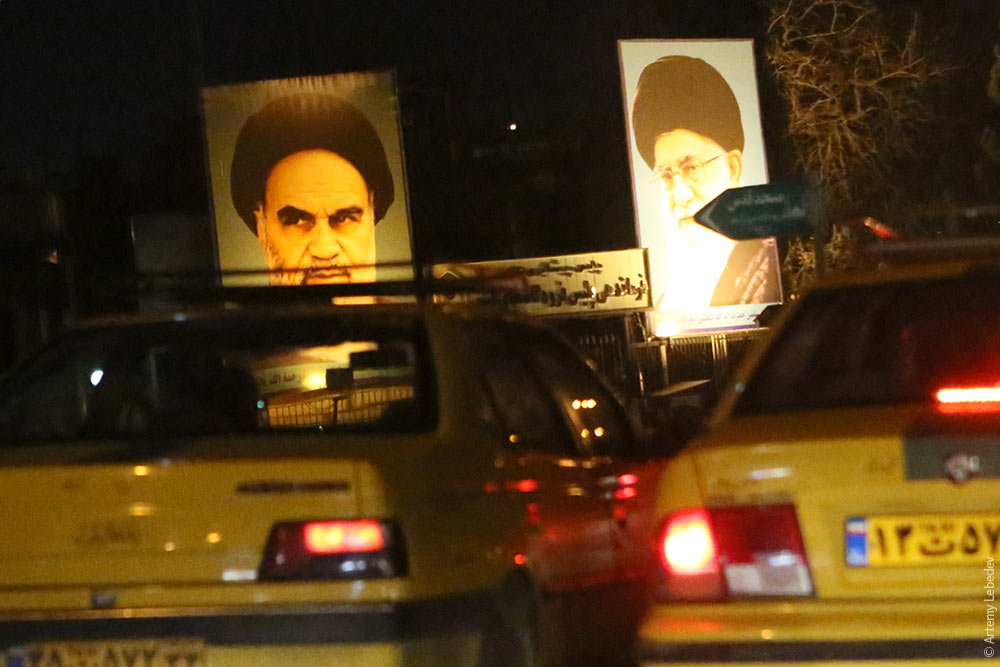 Hypocrisy—this is the word that best describes contemporary life in Iran. * * * Iran has a local Coke bottling facility. And the toilet paper here is different. It’s incredibly thick, and the sections are about three times longer than what westerners are used to. 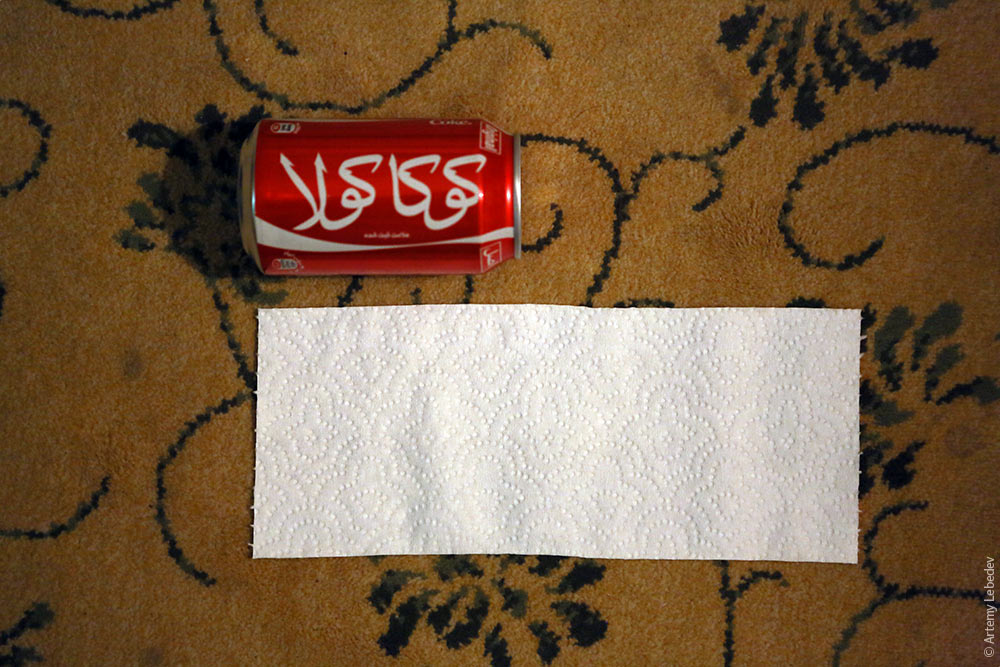 Continuing on the topic of unusual sizes, I was also surprised by the size of Gillette deodorants. An ordinary gel deodorant here is as tall as an air freshener can. 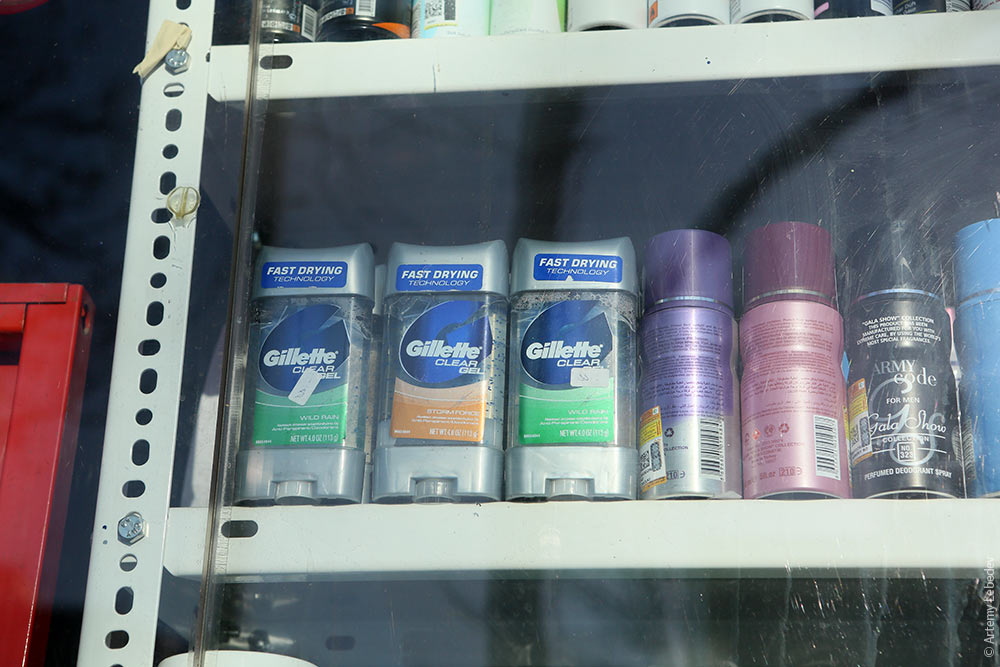 Public bathrooms offer two different toilet options, for the sitter and the squatter. You’ll often find both in the same stall. 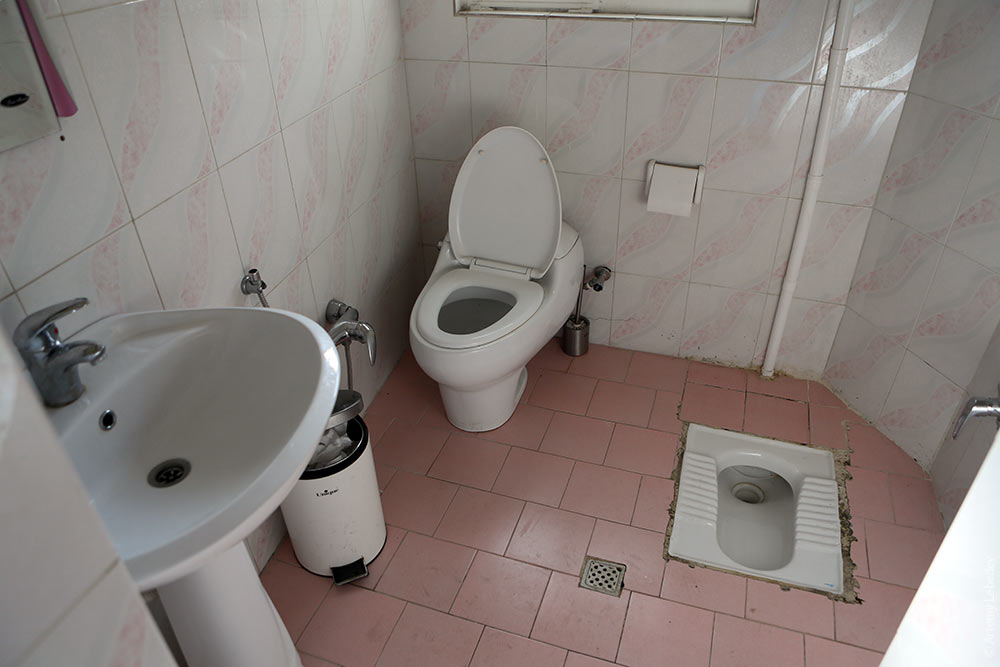 The most common object in the streets is a donation box to collect funds for the needy and disabled (Islamic norms dictate that everyone must regularly donate to such causes). All the Iranians I asked said they never put any money in the boxes and seriously doubt that anyone else does, either. 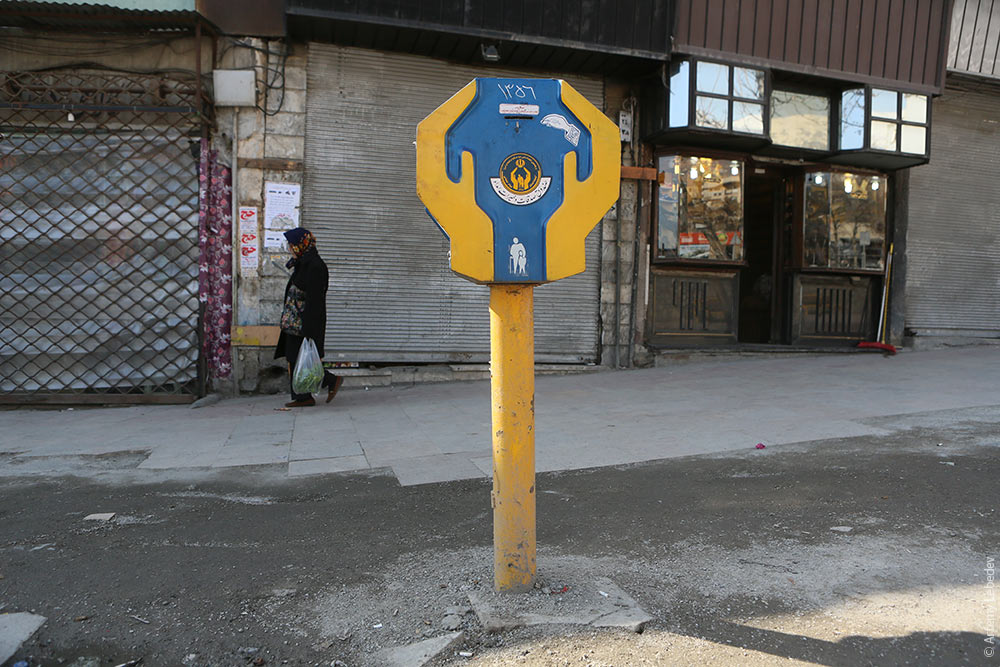 At tollbooths, these boxes are stacked on top of one another in threes so that truck drivers can’t say the box was too low for them to reach from their high cab. 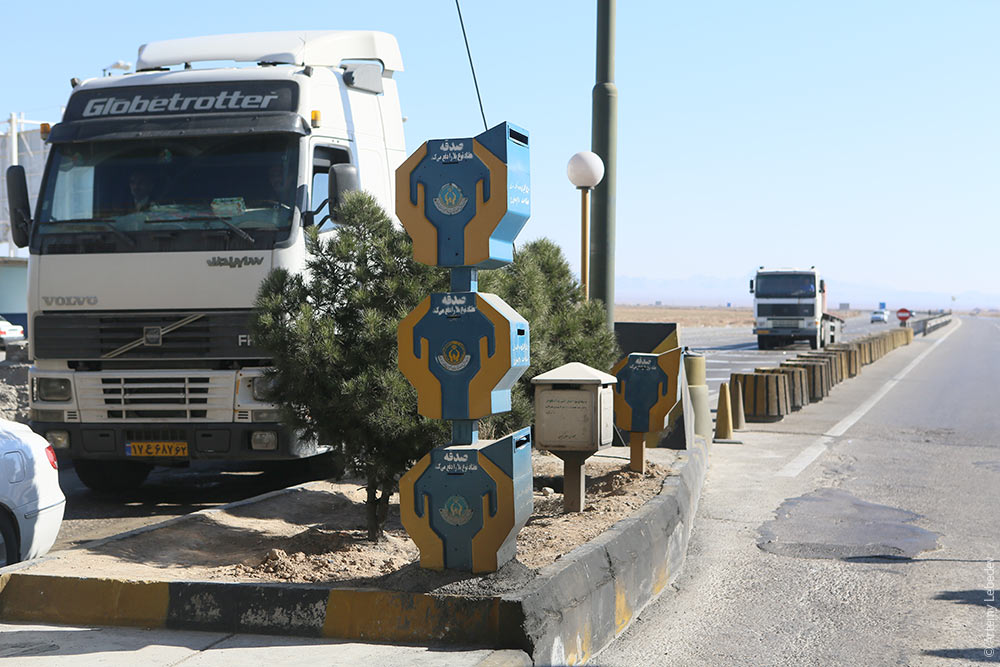 The older child is reaching for the head of the younger one on the “children” sign. 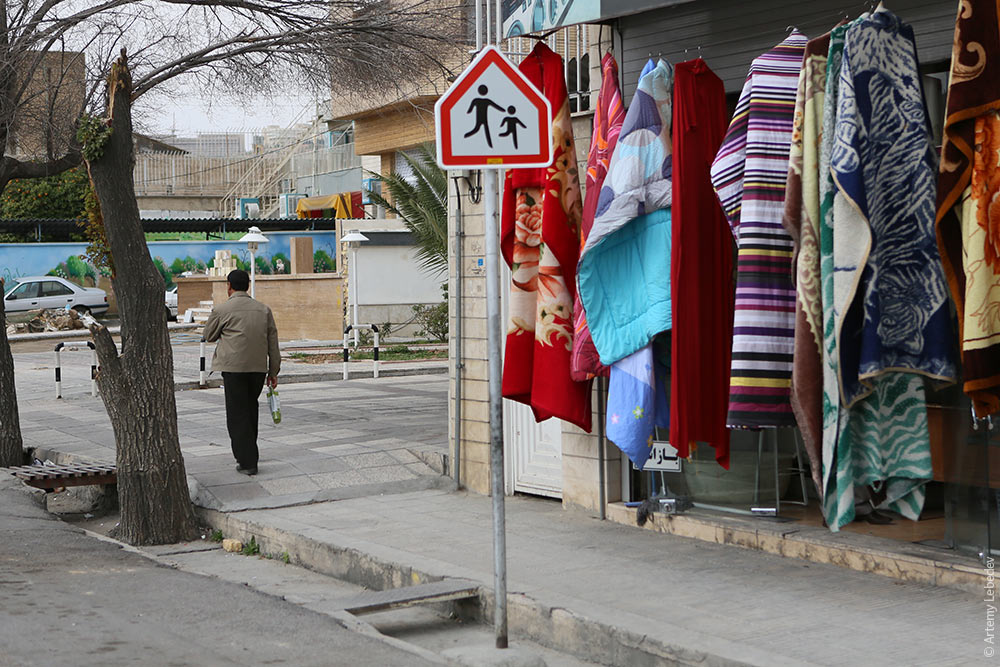 No honking.  The pedestrian’s head on the sign is about to roll off his shoulders and fall to the ground. 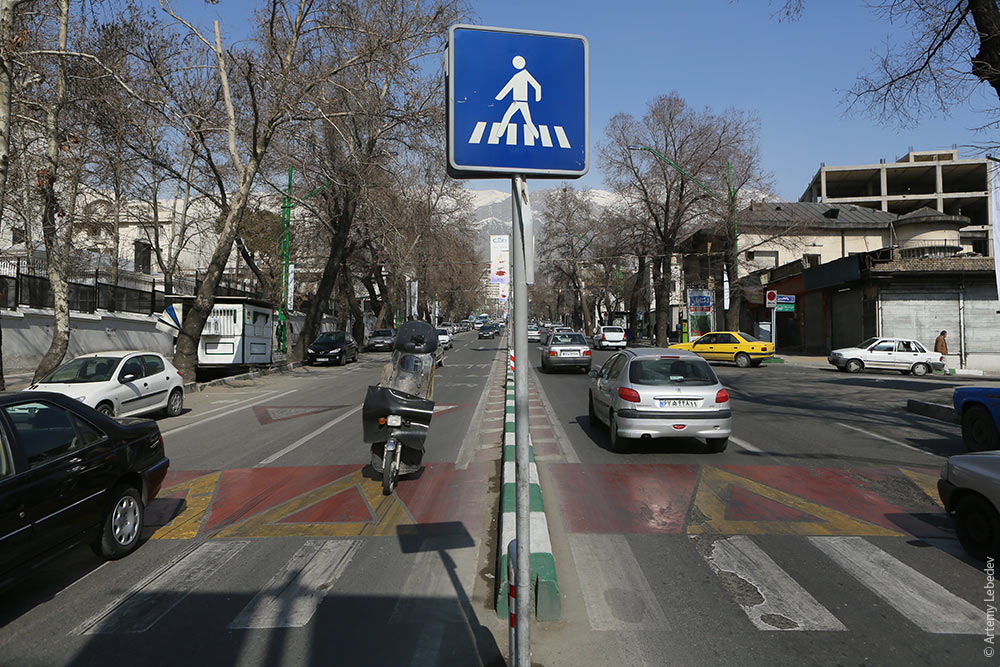 A digger. 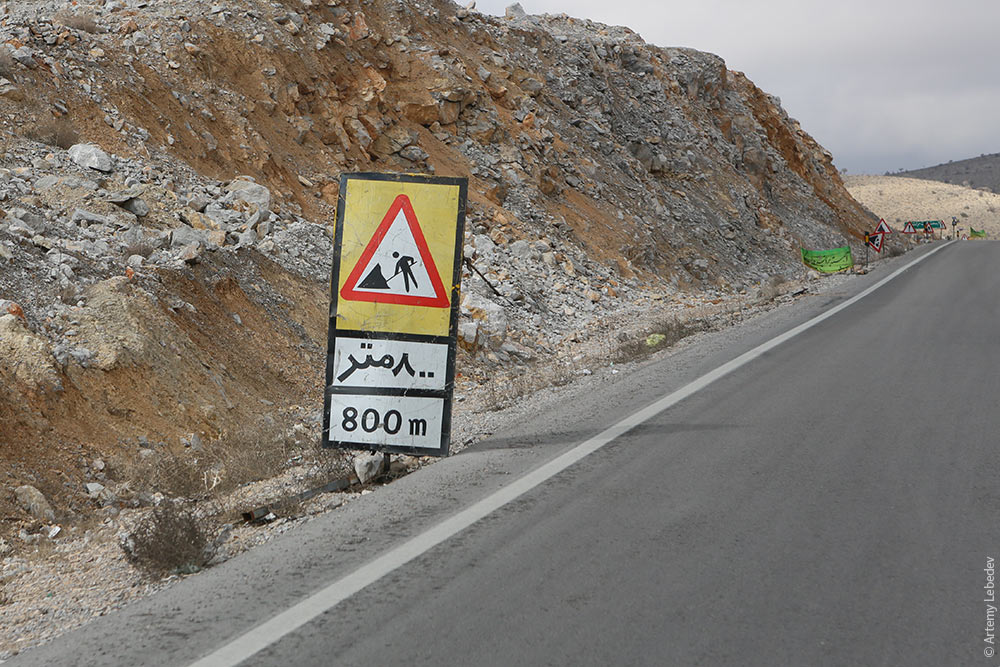 Cow. 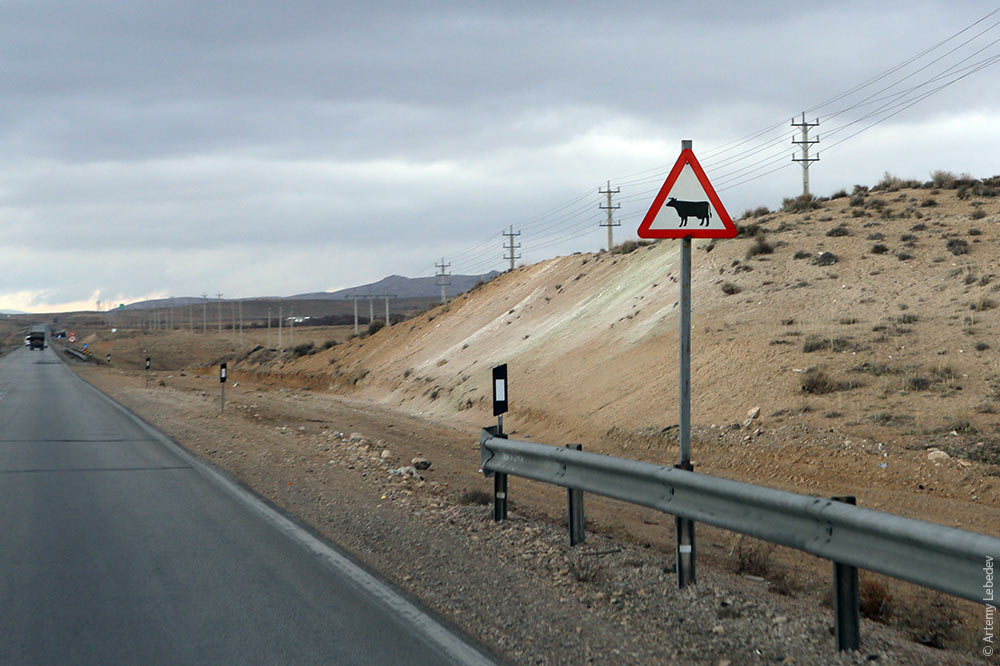 Falling rocks.  A great “populated locality” sign with mosque silhouettes. 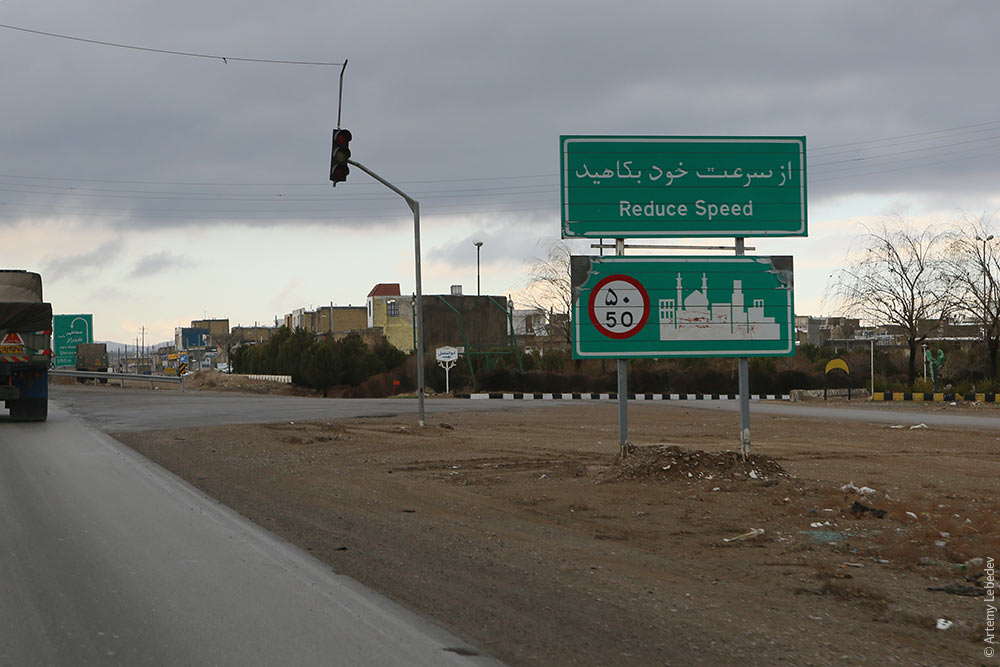 A winter sign for trucks: put chains on your tires (like in Turkey). 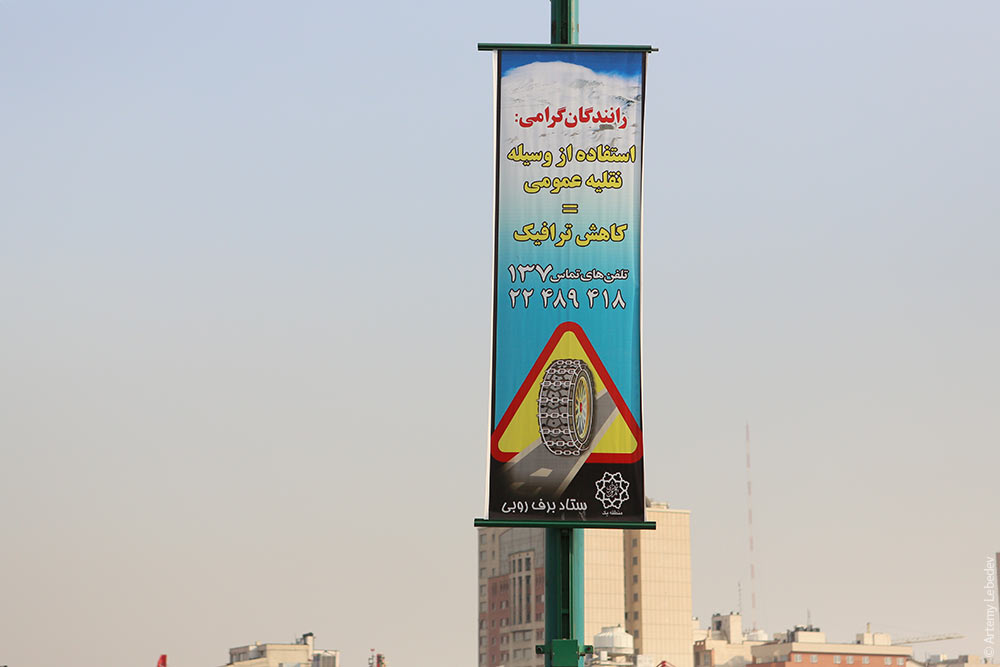 A “fasten your seatbelt” sign with a surprisingly unintelligible pictogram. On the bright side, nearly all the signs in the country have legends in good English, which is handy. 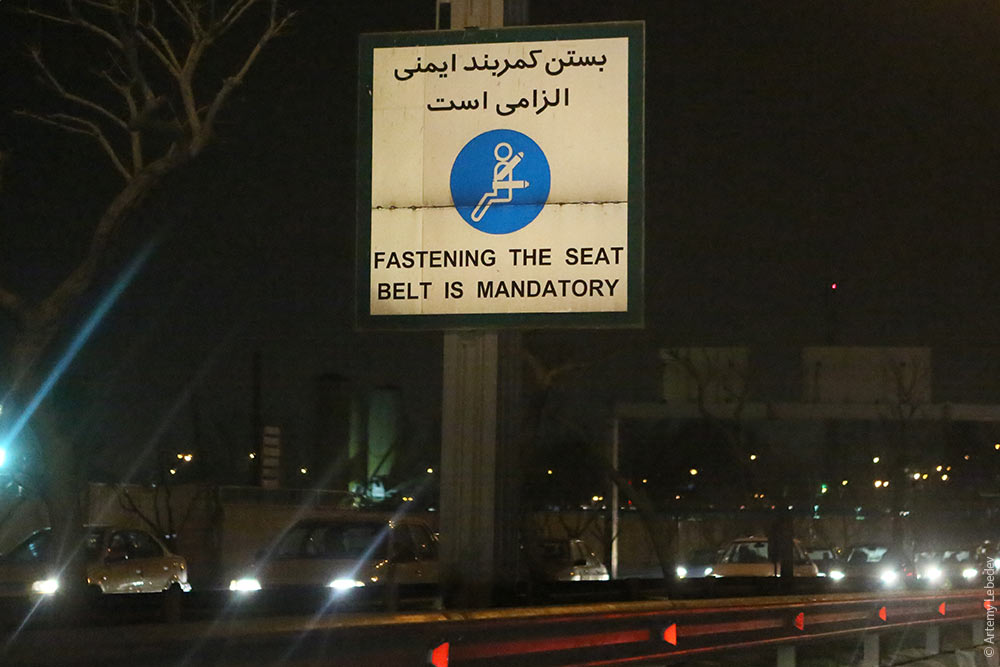 The pregnant woman pictogram is fantastic. She already has a little passenger inside.  Every truck has two triangular stickers with exclamation marks on the back. Almost all of them say “Danger” underneath in English.  The taxis all have fascinating taxi company logos on their front doors.  You get the impression that in-situ concrete construction hasn’t been invented here yet. All buildings are constructed out of steel frames which are then filled in with brick or concrete blocks. 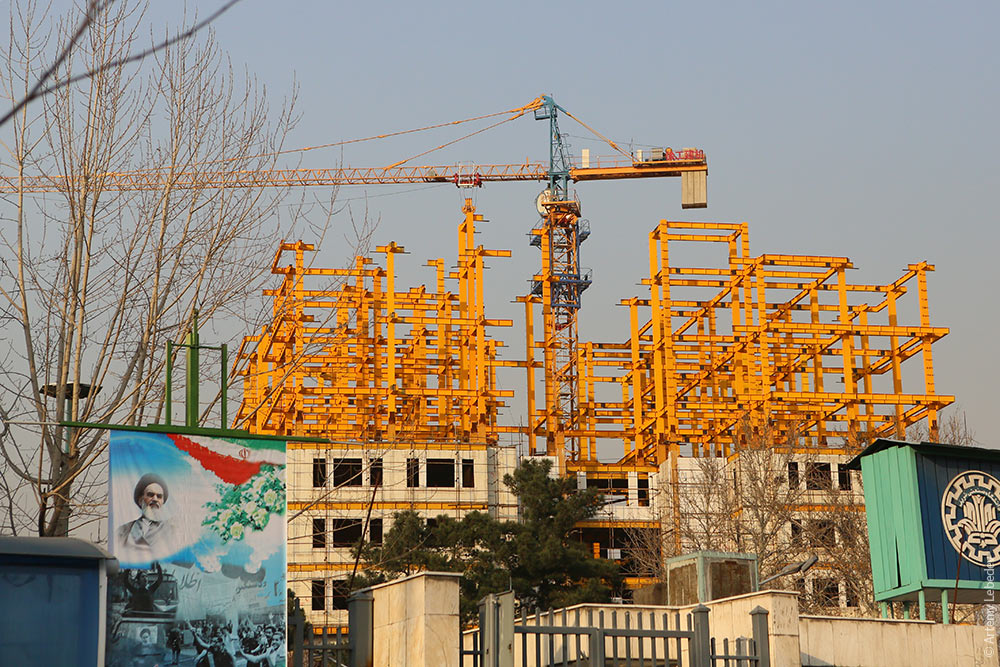 Every street has irrigation ditches running along both sides (like in Almaty). The ditches are always uncovered, they have little bridges laid over them. 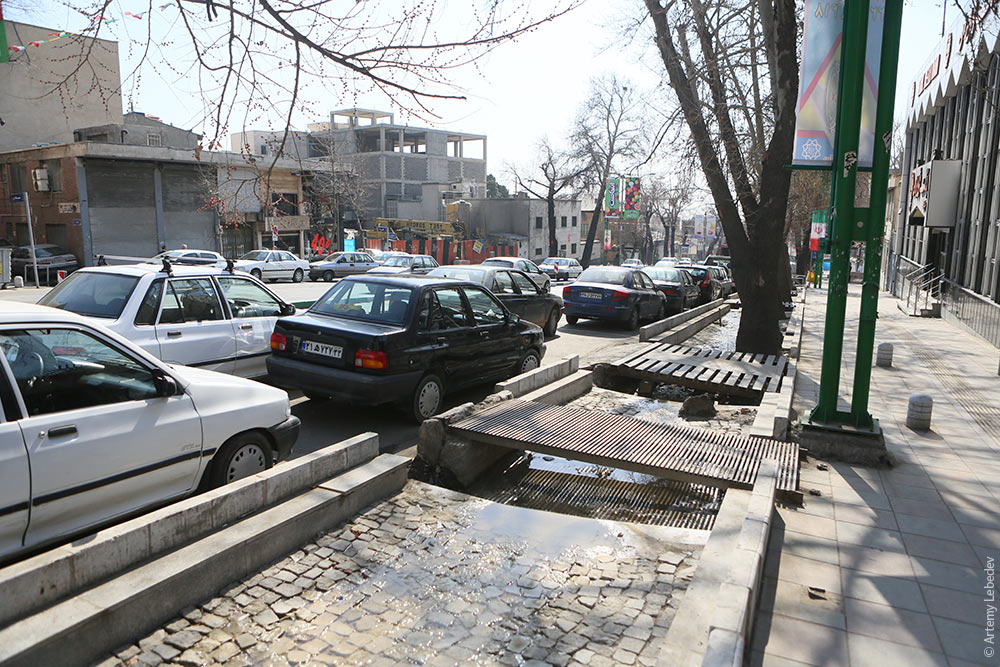 The trash dumpsters parked on special rails thrown across the ditches look particularly touching. 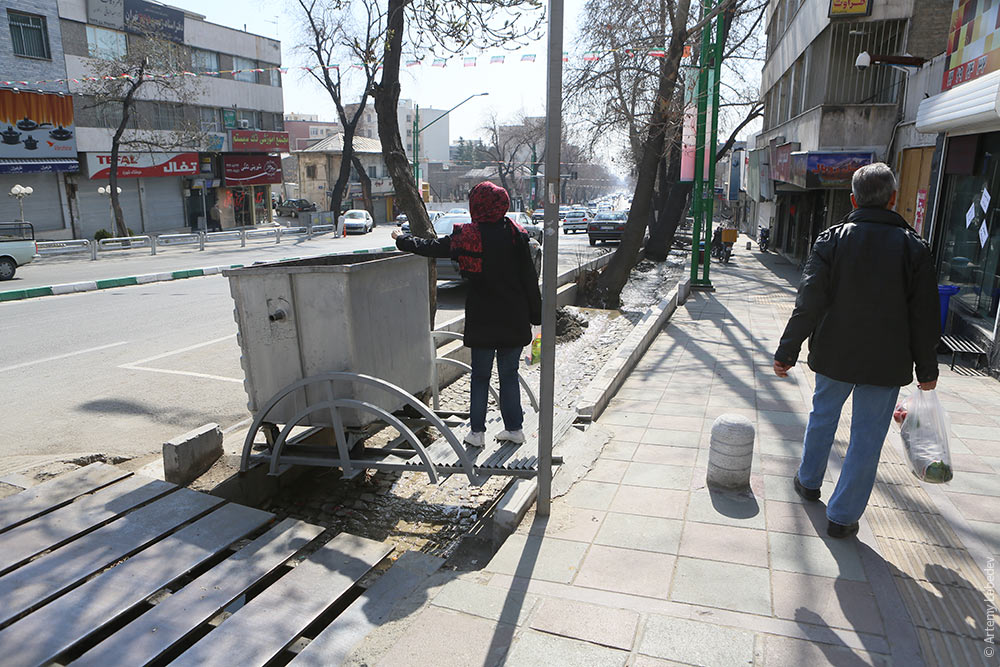 All women must wear headscarves in public. 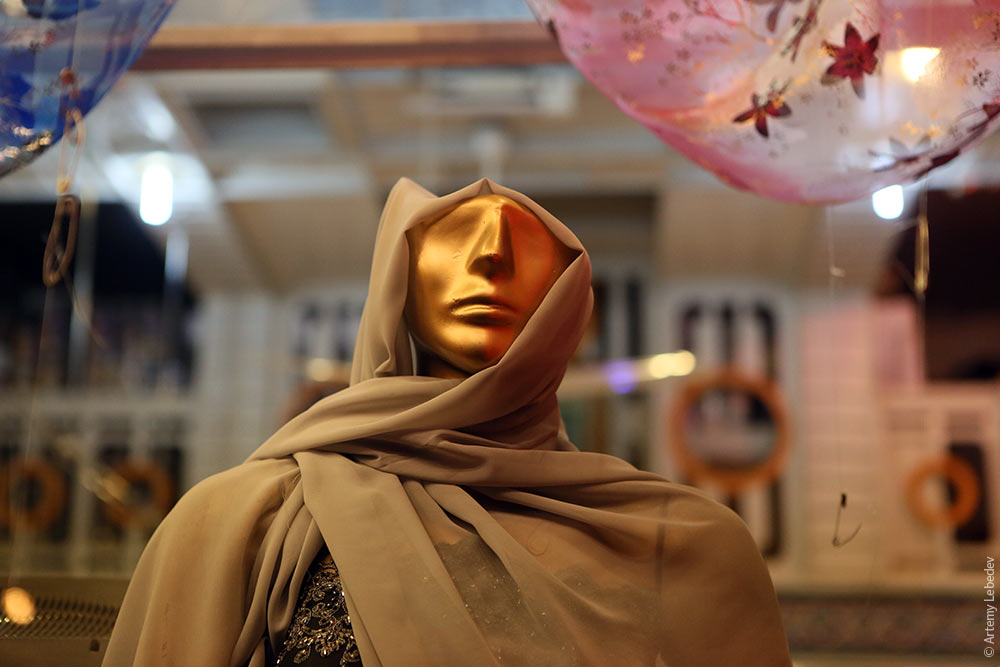 Young women wear their headscarves over the tops of their heads or suspend them from bows which are likewise attached to the tops of their heads. Old women wear headscarves that cover practically their entire forehead. 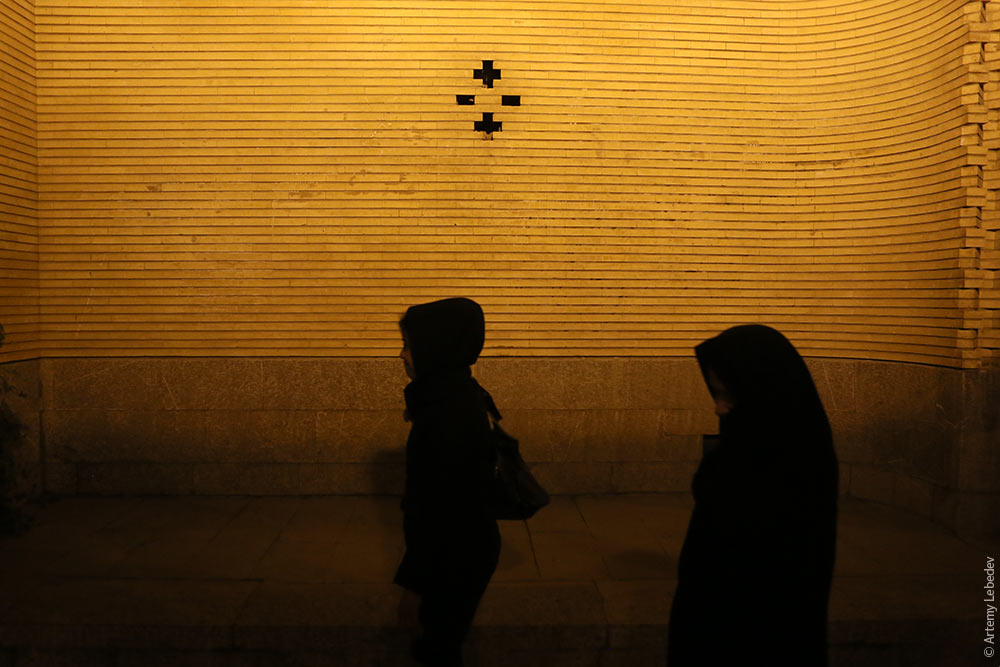 Iranian women have no shortage of attractive qualities, but there’s one thing that gives them no respite. Their noses. Nature has endowed Iranian women with the Middle Eastern sausage-nose. 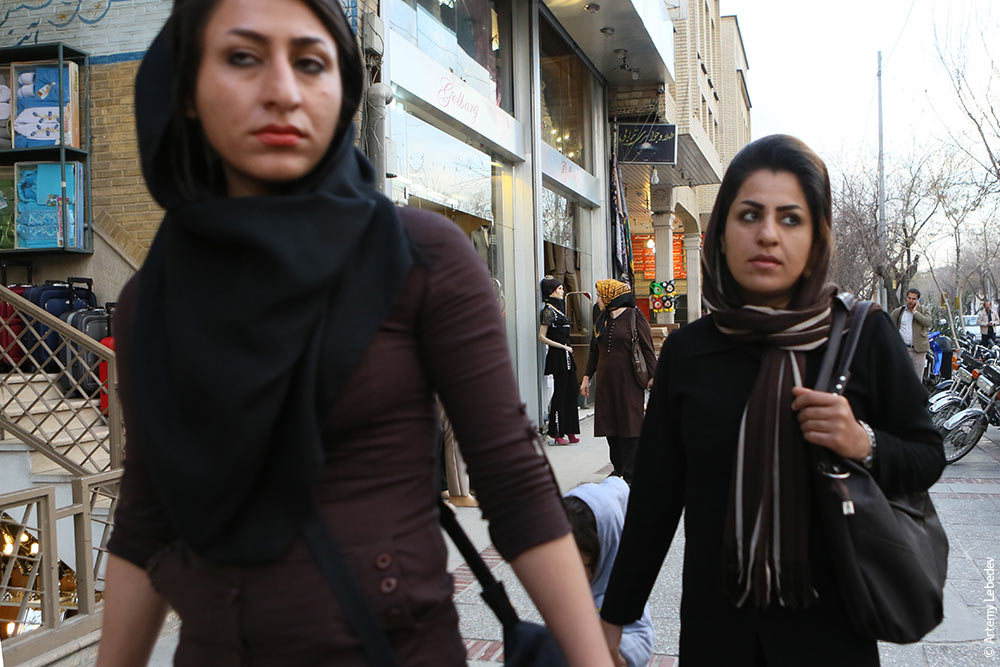 That’s why, as soon as she can afford to part with approximately three and a half thousand dollars, every Iranian woman immediately goes out and gets a nose job. They usually overcompensate and end up with an absurd, Michael-Jackson-like result. They just don’t know when to stop. 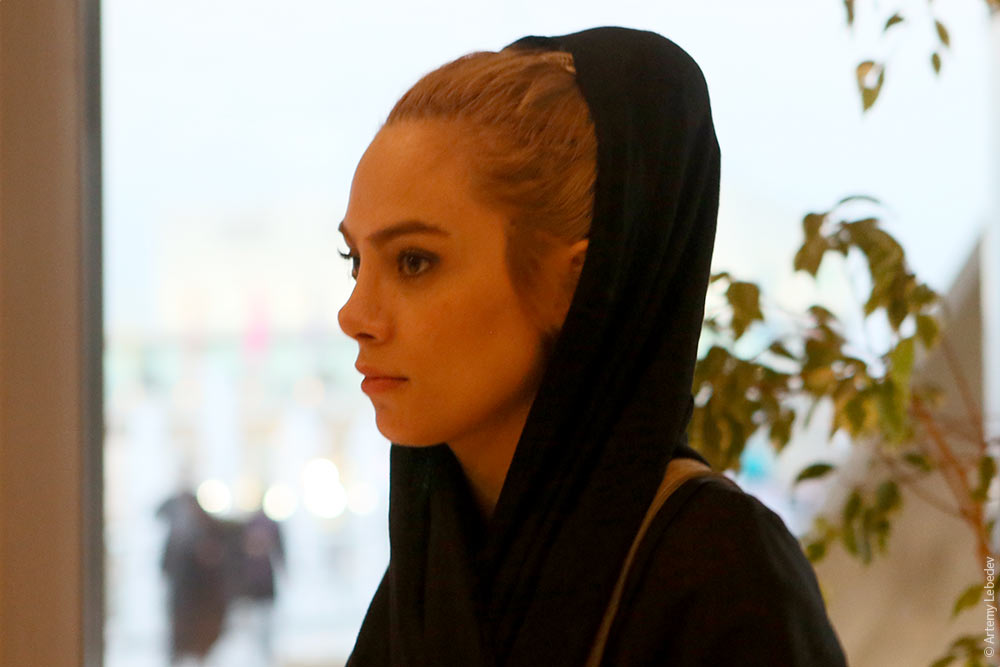 The question isn’t whether or not you want to get it done, it’s whether or not you can afford it. Everyone who can come up with the money for a nose job will get one. 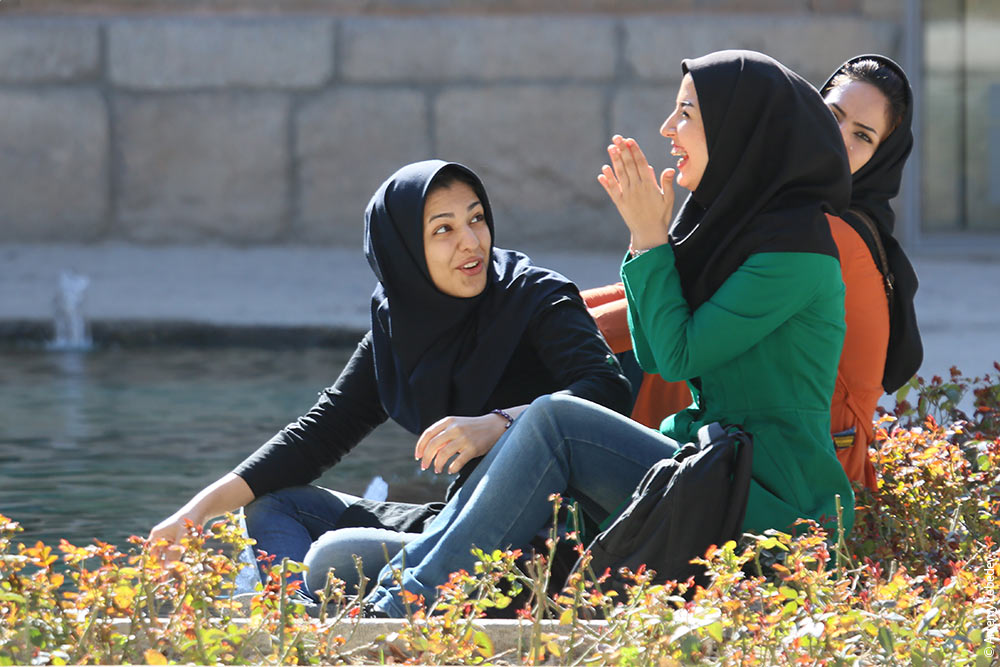 The streets are full of people with post-op bandages on their faces. Here are three girlfriends at the airport, returning home from Teheran, renewed. 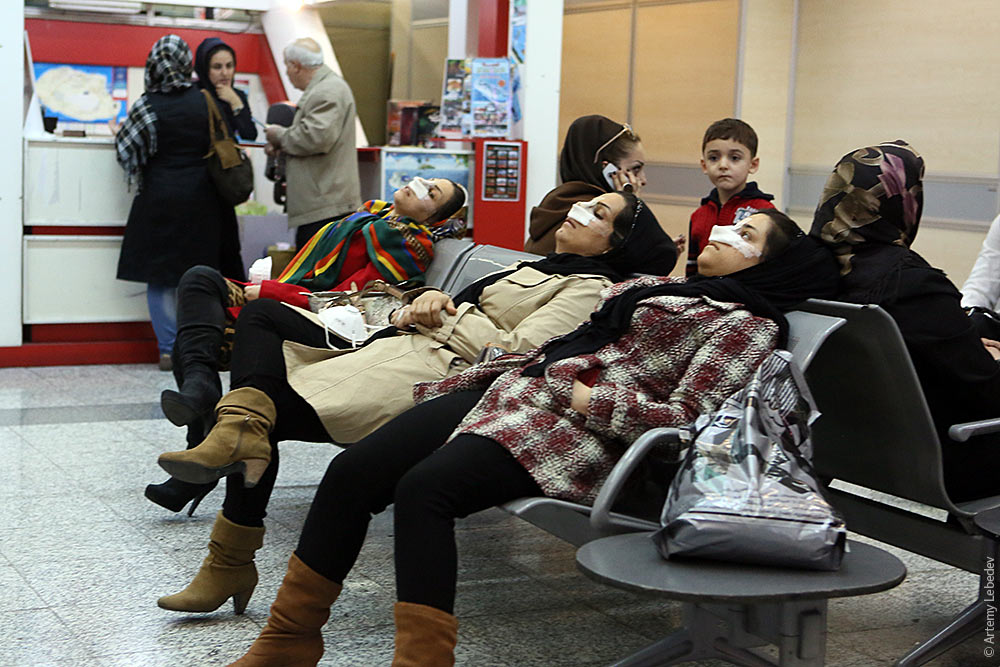 Young men also get their noses done. 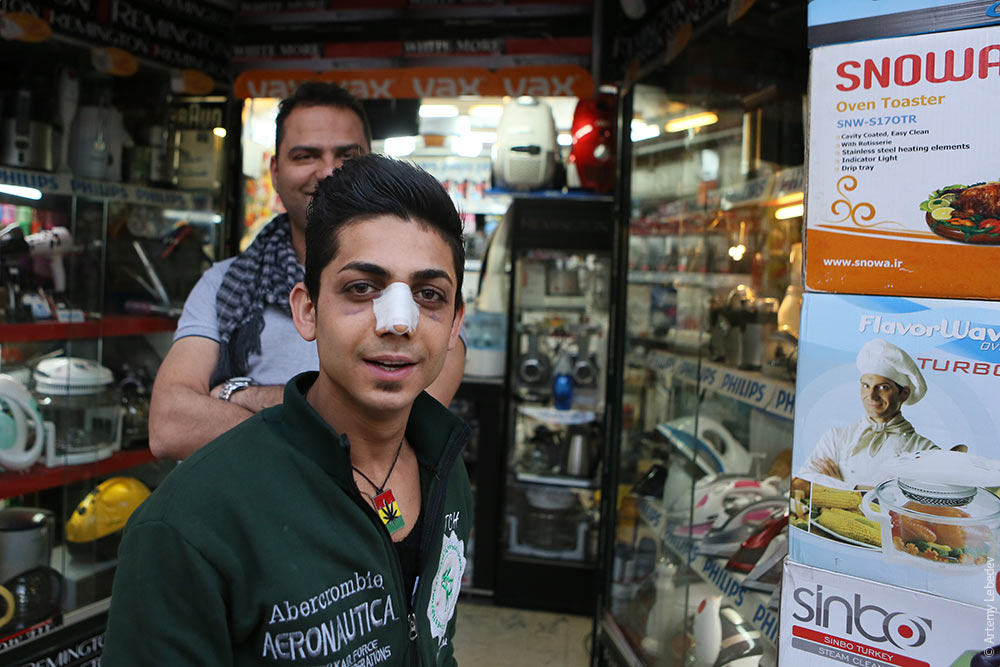 And those who don’t have to take it on the nose. 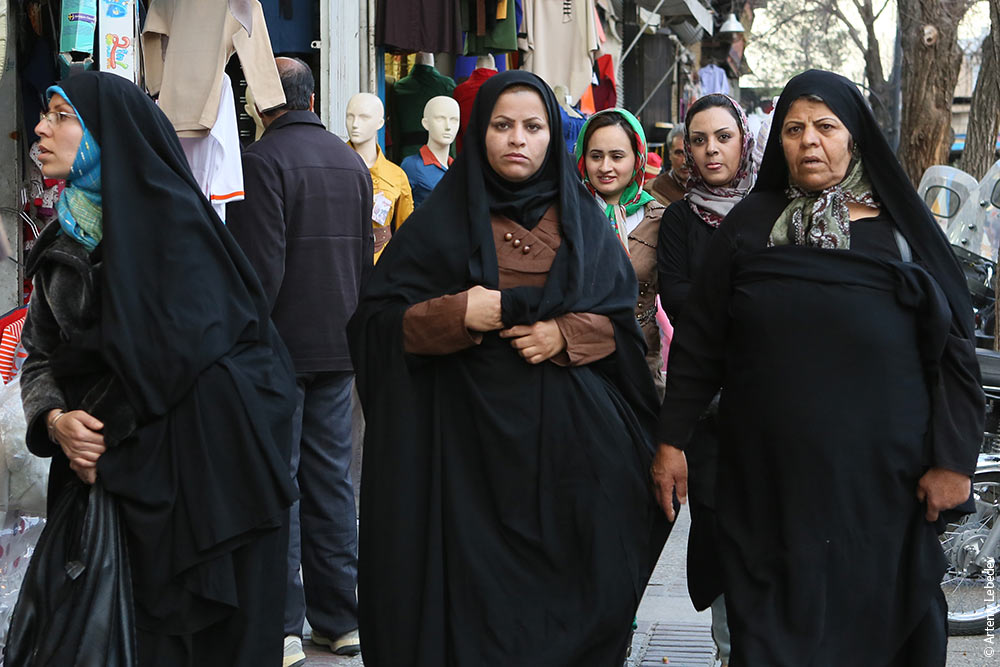 All construction sites have striped fences. Red and black or yellow and green (hello, Moscow and Addis Ababa!) 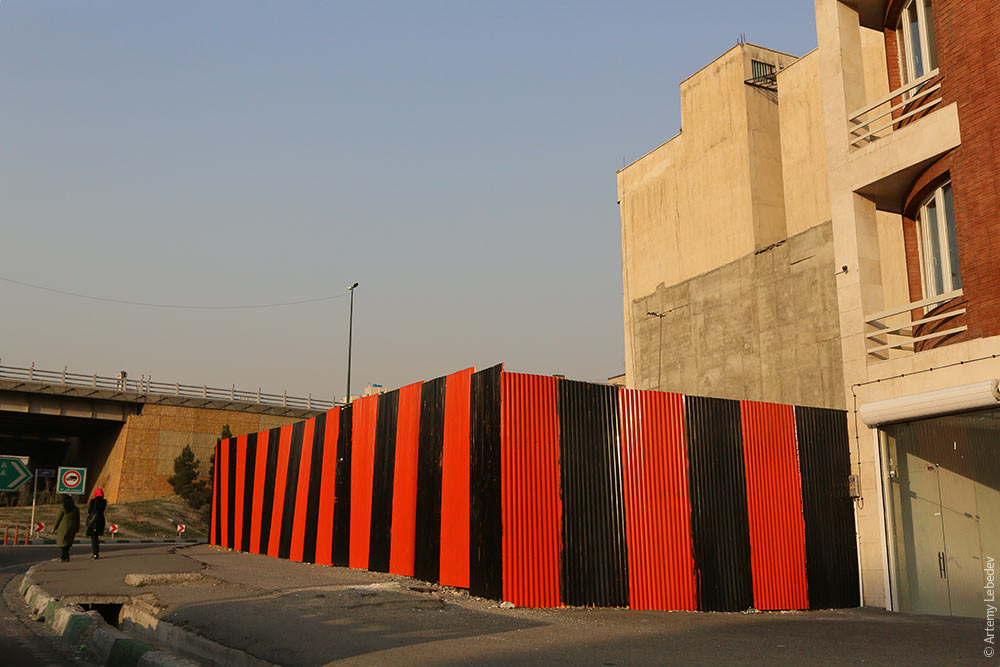 Humpbacked traffic light poles are a characteristic feature of the Iranian landscape.  The traffic lights are perplexing to visitors. In addition to the usual red-yellow-green ones, there are also flashing traffic lights, all three sections of which are the same color. Three red lights on one side and three yellow ones on the other. The top and bottom sections and then the middle one flash in sequence. Apparently, the red side means “yield” and flashes in the direction of the secondary road, while the yellow side means “caution” and flashes towards the main road, which has the right of way. 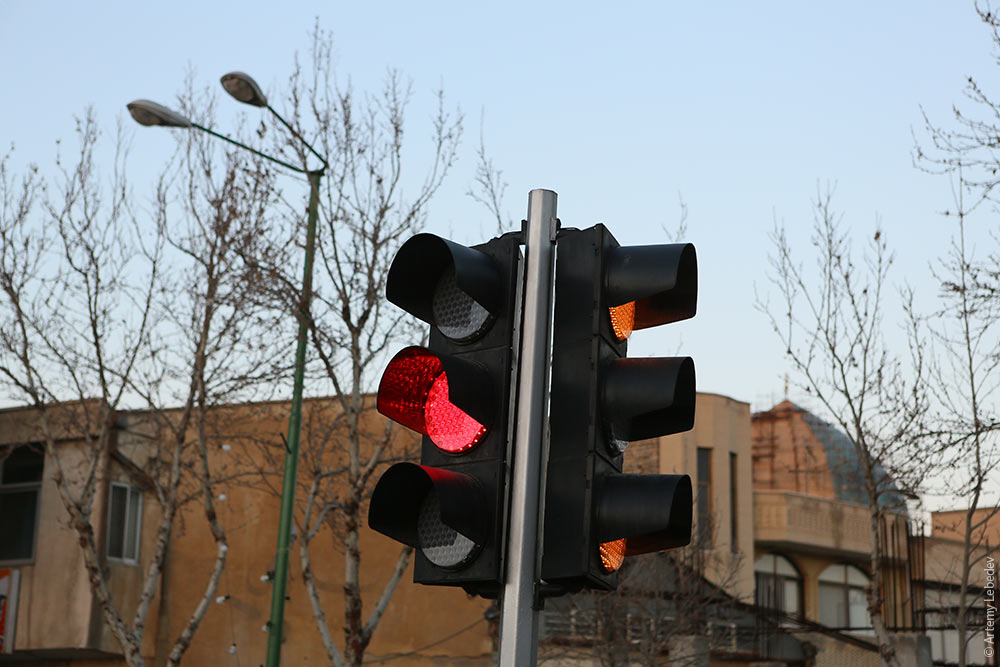 Iran makes cube-shaped air conditioners with a distinctive turquoise trim. 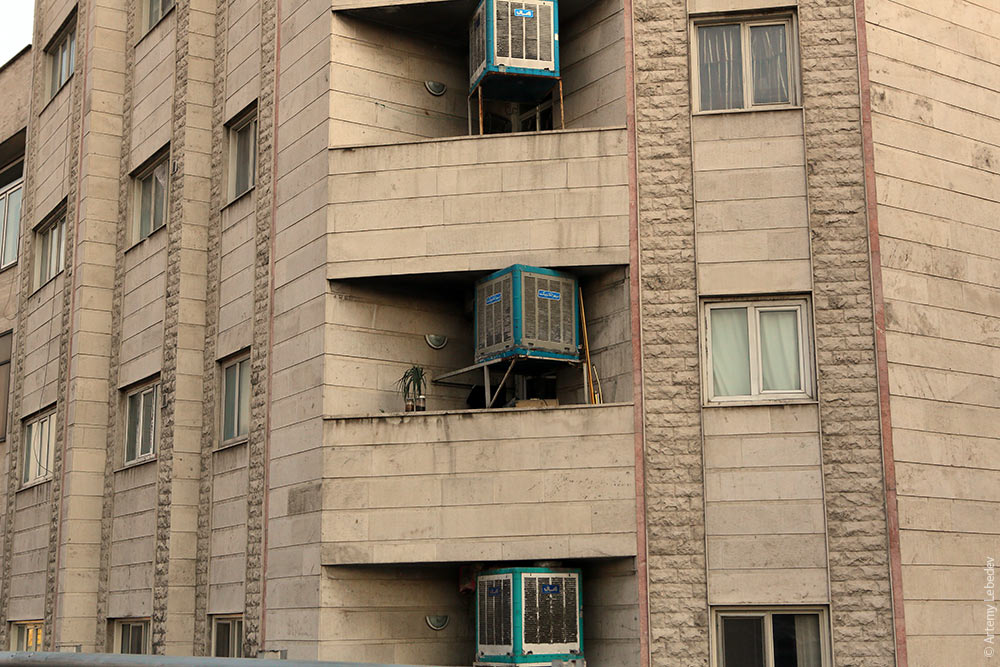 The country produces Renault cars under license. And some kind of local-variety pickup trucks. 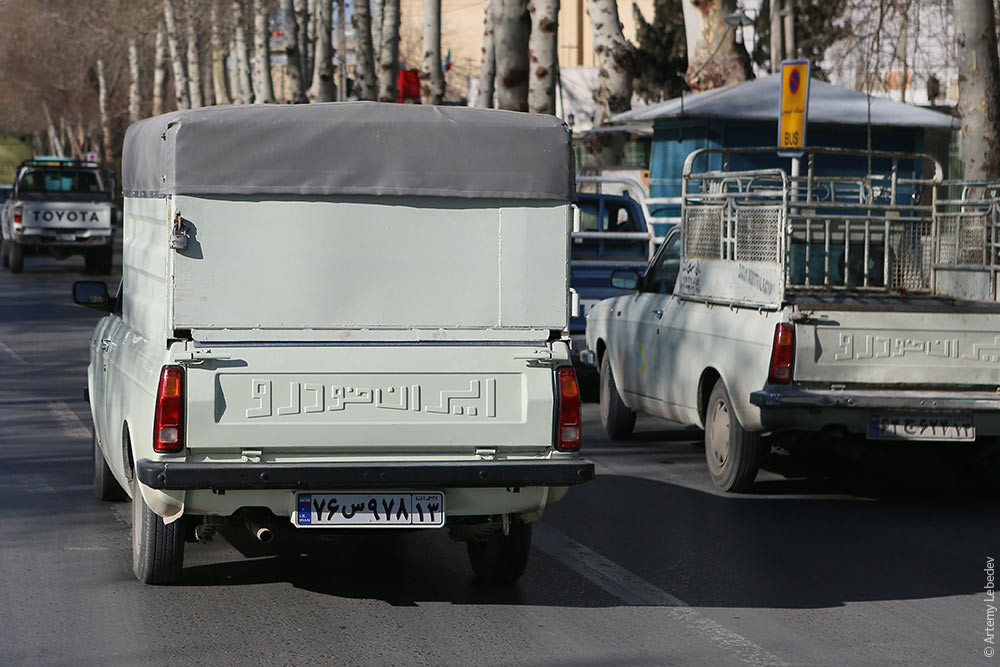 They also make a Defender clone that’s assembled surprisingly badly and with total disregard for comfort. The windows don’t open all the way, the door hits your leg, the weld seams are sausage-thick, it’s a slapdash job all around.  Iran has a huge number of cars and massive traffic jams. In big cities, there’s a system whereby each car can only be driven on even or odd days, depending on whether the last digit of the license number is even or odd. Those whose number ends with ۱ (1) cheat and add a little sticker on even days to make ۲ (2). 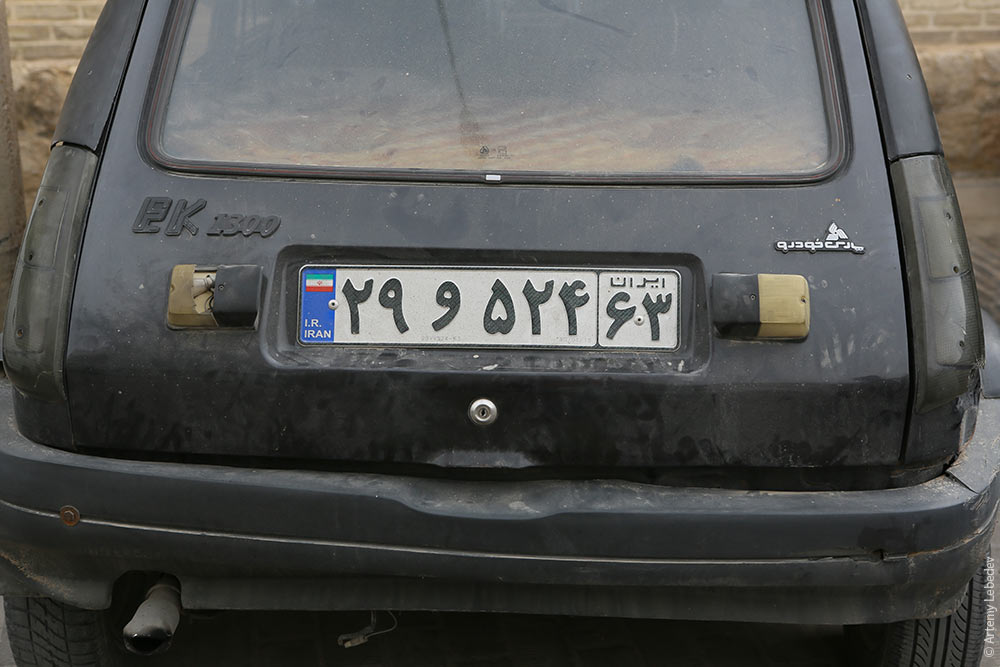 Local motorcycles have milky windshields with a clear window in the middle. 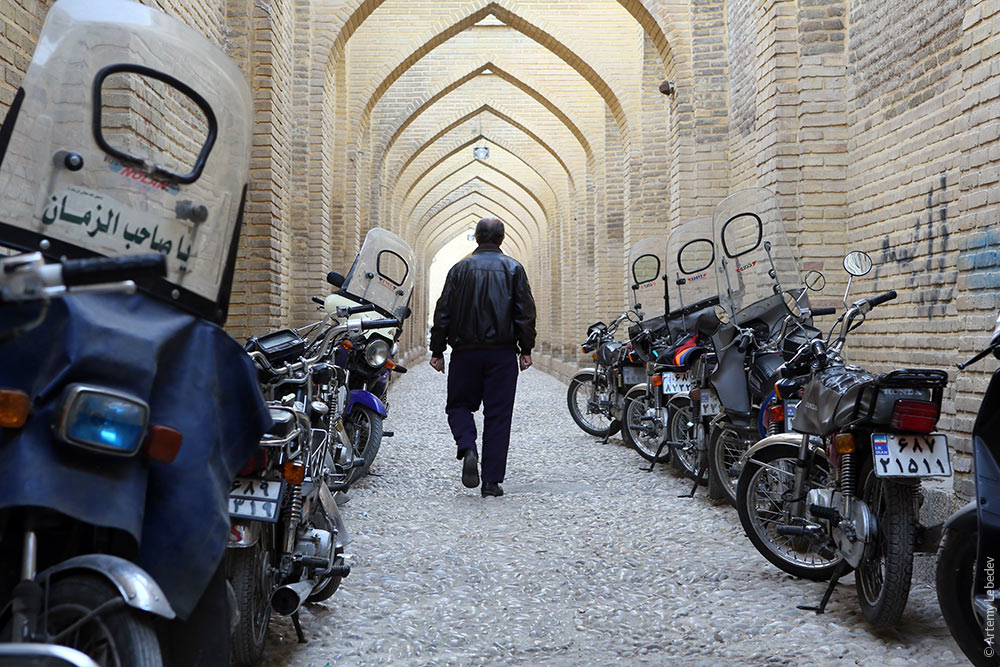 Every house is connected to the gas network via a pipe that runs along its façade and has a special round valve to regulate excess pressure. 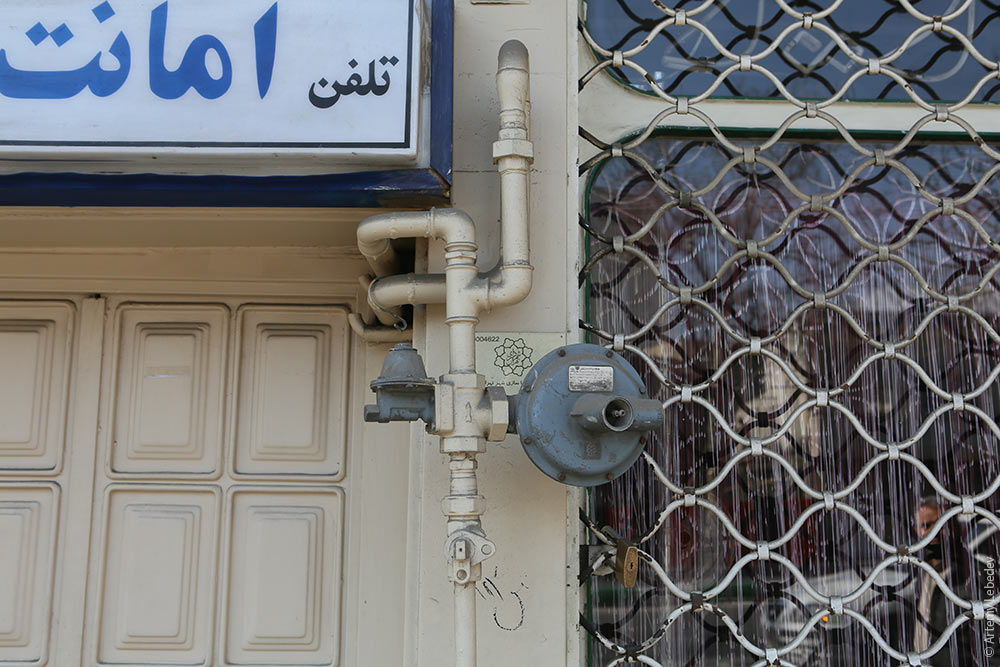 There are many mailboxes in the streets. Not as many as charitable donation boxes, but still many. 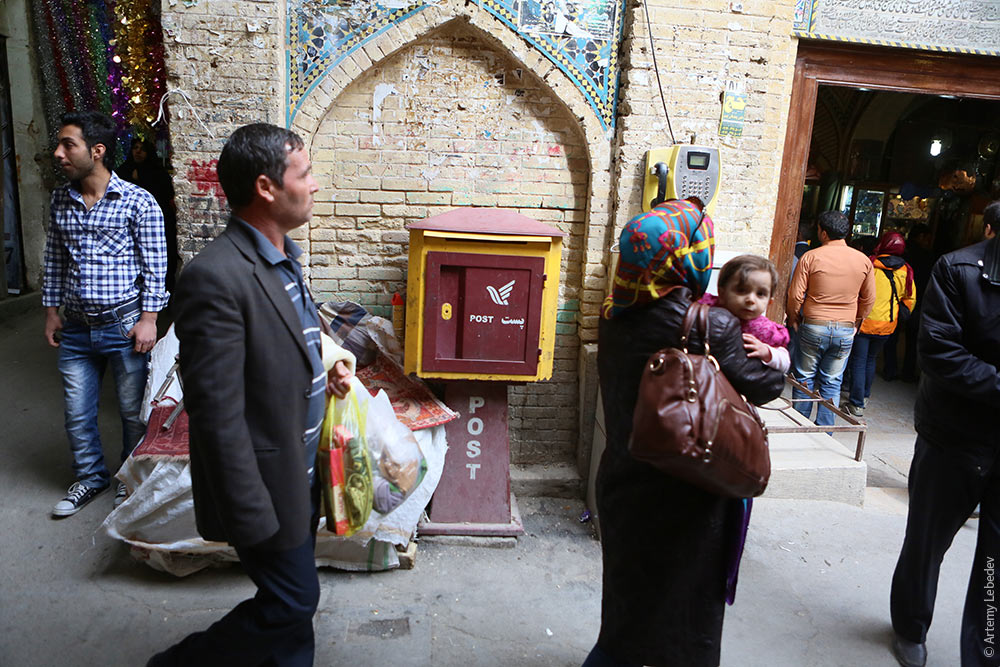 Across the street from the main post office, there’s a monument to a mailbox in the form of a boy depositing an envelope into an actual mailbox. You can squeeze a postcard through the crack, but I wouldn’t recommend doing so. The mailbox is welded shut and can’t be opened. Your postcard will become a part of the monument forever (similar disappointment was experienced at the mailbox monument in the Faroes). 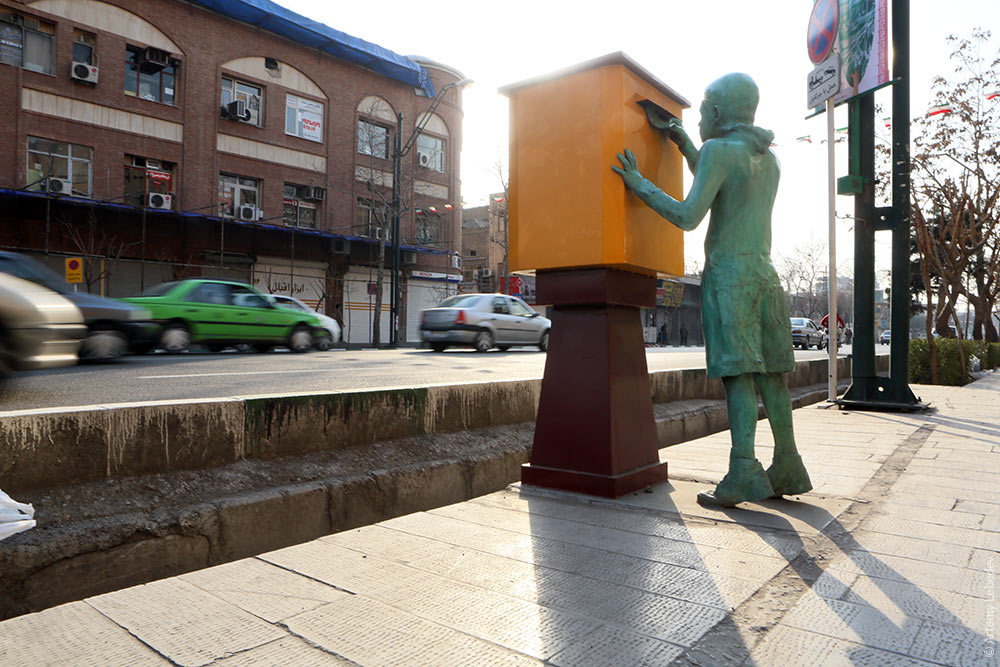 Water towers are painted with a checkerboard pattern. 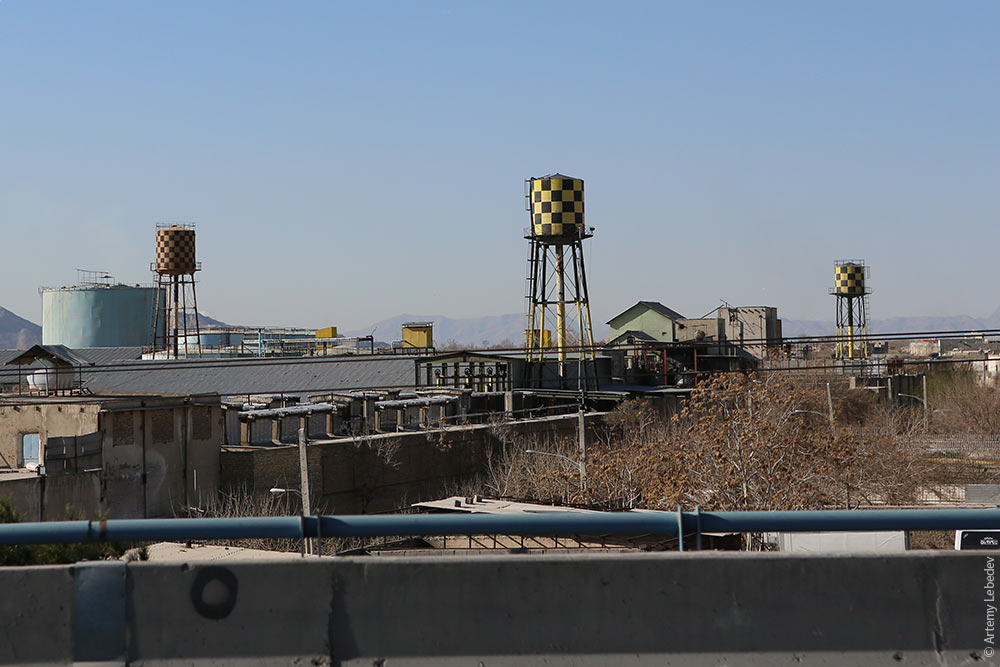 Many bakeries make their bread in ovens filled with crushed stone. The flatbread that comes out usually has a few little stones stuck to it (these are called “sangak”). The customer carefully picks the sangaks out of his bread on a special mesh surface, they drop down below and are then collected to be put back in the oven. 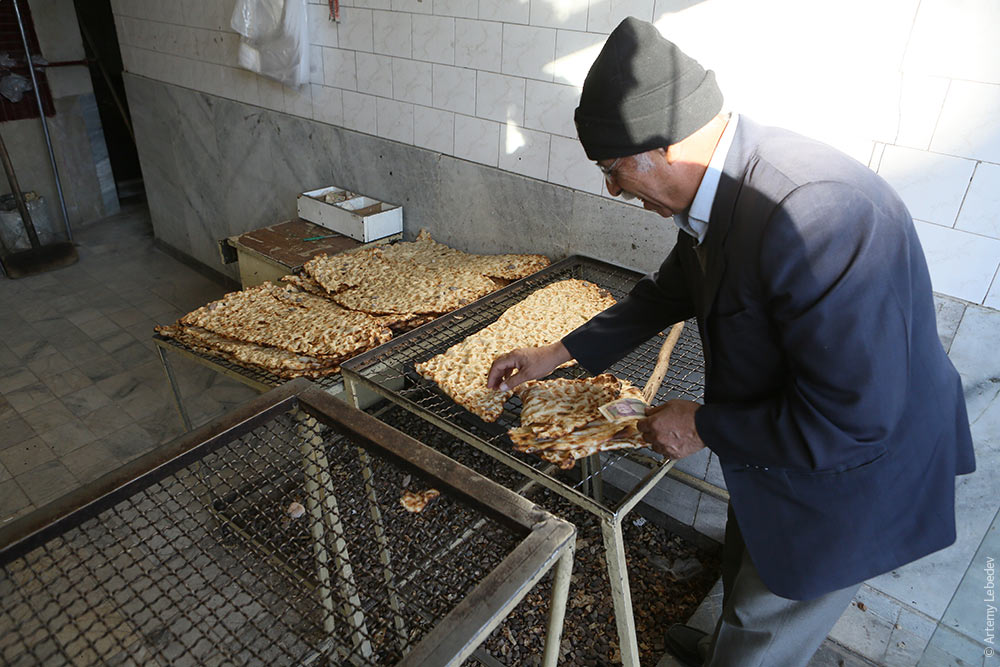 The food in Iran is surprisingly unappetizing and lacking in variety. The only interesting local dish is marinated cauliflower. Kebab is served for breakfast, lunch, and dinner at every restaurant. Kebab, kebab, kebab. By the third day, the traveler begins to experience kebab poisoning. You desperately want to eat something different, but there’s nothing else. 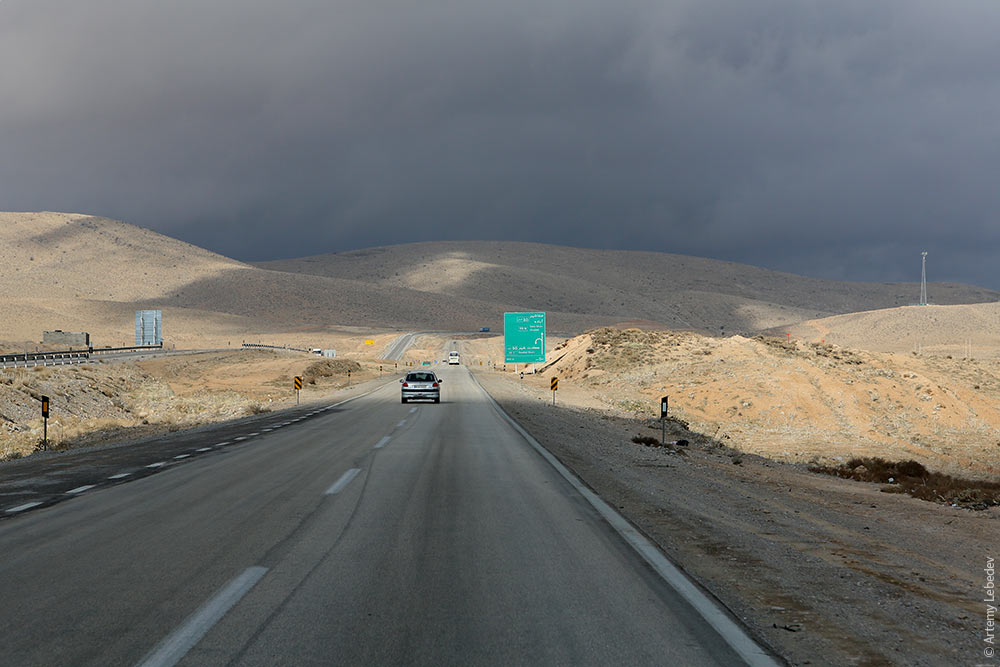 Well, how about some more kebab then? |